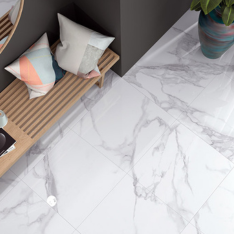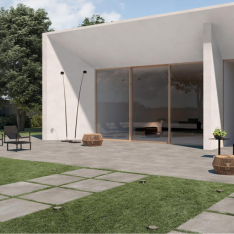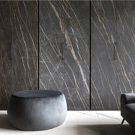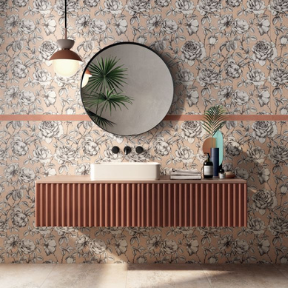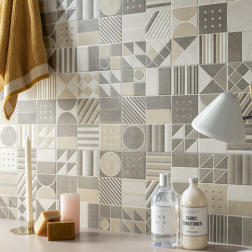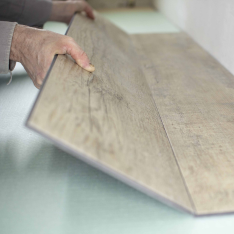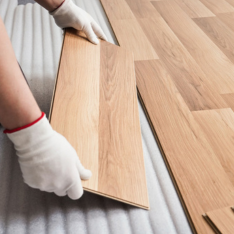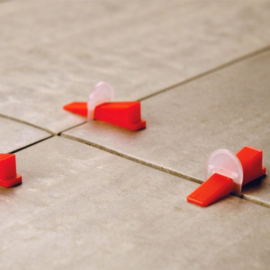Porcelain stoneware is a highly versatile ceramic material, widely used for flooring and wall coverings. If you are wondering what porcelain stoneware is, know that it is a mixture of clays, feldspars, and sands, which is fired at high temperatures, giving it superior density and strength. This type of ceramic emerged in Europe in the 1970s, inspired by traditional Italian production techniques, and quickly gained popularity for its exceptional technical and aesthetic properties.
Its origin lies in the need to create materials that could withstand extreme environmental conditions. The first productions took place in Italy, where the ceramic tradition merged with technological innovation. Today, porcelain stoneware is produced in various countries, maintaining high-quality standards, but with a range of designs that adapt to different architectural styles.
In this article, we will explore in detail the production process, technical characteristics, aesthetic properties, the various types available, the advantages of use, and applications of porcelain stoneware, as well as provide maintenance tips and an illustration of future trends.
What is Porcelain Stoneware: The Production Process
The production process of porcelain stoneware is an art that combines tradition and advanced technology. It begins with the selection of high-quality raw materials, which are first ground and then mixed in specific proportions. This phase is crucial since the quality of the raw materials largely determines the final characteristics of the product.
After mixing, the mass is shaped into desired forms, through pressing. This step allows to obtain slabs or tiles of uniform dimensions. Once formed, the pieces are subjected to drying to remove excess moisture, preparing the material for final firing.
Firing takes place in kilns at very high temperatures, usually between 1200 and 1400 degrees. This process not only gives porcelain stoneware its robustness but also develops its waterproof and scratch-resistant properties. Once firing is complete, the product can be glazed or decorated according to market needs, giving rise to a wide range of finishes and colors.

What is Porcelain Stoneware: Technical Characteristics
What makes porcelain stoneware a preferred choice for many applications? It is a material with excellent technical properties, which make it ideal in various contexts, even industrial ones.
- Density. Porcelain stoneware has low porosity, which means it is extremely resistant to liquid absorption. This makes it ideal for humid environments such as kitchens and bathrooms, where it is essential to maintain dry and hygienic surfaces.
- Mechanical resistance. Porcelain stoneware can withstand heavy loads and resist impacts and scratches, making it suitable for high-traffic areas. Despite its hardness, it is also relatively lightweight compared to other construction materials, thus facilitating installation operations.
- Resistance to chemicals. Porcelain stoneware is able to resist chemicals and detergents, which makes it a safe choice for commercial or industrial environments where accidental spills may occur.
These technical properties make it an excellent material for a variety of applications, from residential to commercial flooring.

What is Porcelain Stoneware: Aesthetic Properties and Versatility
In addition to its technical characteristics, porcelain stoneware is also appreciated for its aesthetic properties. Thanks to advances in printing and glazing technology, you can find porcelain stoneware tiles in a wide range of finishes, colors, and textures. This allows you to customize spaces in a unique way, creating environments that reflect your personal style and preferences.
The tiles can imitate natural materials such as wood, marble, or stone, offering the look of these materials without their associated drawbacks. For example, wood-effect porcelain stoneware offers the warmth and beauty of natural wood without the maintenance problems associated with it. In addition, the variety of formats available, from square tiles to large slabs, makes it easy to adapt porcelain stoneware to any design project.
The versatility of porcelain stoneware goes beyond aesthetics. It can be used in a variety of applications, both indoors and outdoors. You can use it for flooring, wall coverings, but also for decorative elements such as countertops or shelves. This adaptability makes it ideal for residential and commercial projects, helping to create harmonious and functional spaces.

Design Types
Porcelain stoneware is an extremely versatile material and is available in a wide range of designs and colors, able to satisfy any aesthetic and functional need. Here is an overview of the main types:
- Wood-Effect Porcelain Stoneware. Faithfully reproduces the appearance of natural wood, with realistic grains and knots. Ideal for creating warm and welcoming environments, both in rustic and modern styles.
- Concrete-Effect Porcelain Stoneware. Perfect for an industrial and contemporary look. Offers a minimalist and versatile look, suitable for any environment.
- Marble-Effect Porcelain Stoneware. Reproduces the beauty and elegance of natural marble, with unique veins and shades. Ideal for creating luxurious and refined environments.
- Stone-Effect Porcelain Stoneware. Inspired by natural stones, such as slate or quartz, it offers a rustic and authentic look. Perfect for exteriors and interiors.
- Cotto-Effect Porcelain Stoneware. Reproduces the appearance of traditional cotto, with a slightly irregular surface and warm tones. Ideal for creating rustic and welcoming environments.
- Metal-Effect Porcelain Stoneware. Offers a modern and industrial look, with glossy or matte metallic finishes. Perfect for creating contemporary design environments.
- Decorated Porcelain Stoneware. Offers a wide range of decorations, from geometric motifs to floral designs, to customize any environment.
Each type has specific advantages for different use situations. When choosing the right type of porcelain stoneware, always consider the aesthetic and functional needs of your project.
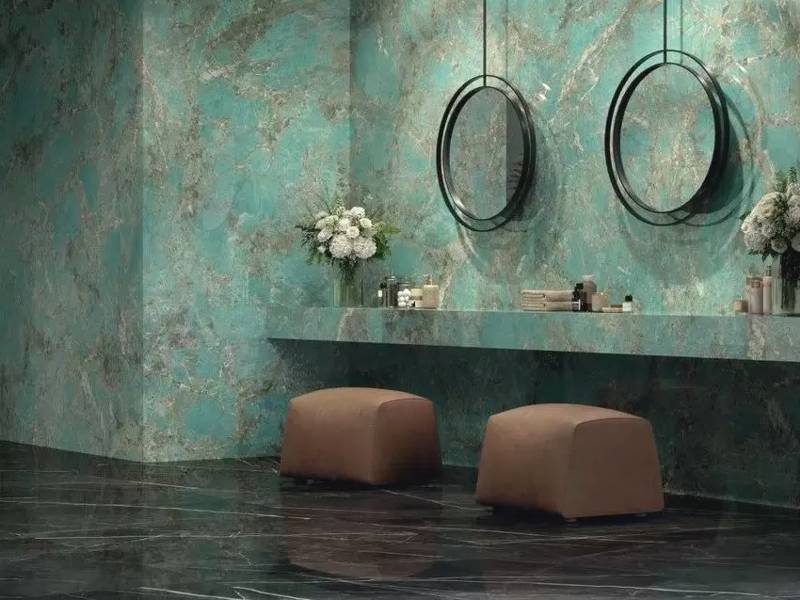
Advantages of Using Porcelain Stoneware
Choosing porcelain stoneware for your design projects offers numerous advantages. First of all, its resistance is fundamental. With a lifespan that can exceed decades, porcelain stoneware is able to maintain its beauty and functionality even in conditions of heavy use. It is not afraid of scratches, stains, or wear, making it ideal for residential and commercial environments.
Secondly, maintenance is another positive aspect. Unlike other materials, porcelain stoneware requires quick and easy cleaning. It is sufficient to use water and neutral detergents to keep it in excellent condition. This ease of maintenance is particularly appreciated in contexts where hygiene is essential, such as in kitchens and bathrooms.
Finally, the environmental impact of porcelain stoneware is another plus. Being a natural material, its production has a relatively low impact on the environment. Furthermore, many companies are adopting sustainable practices in production, such as the reuse of materials. Choosing porcelain stoneware means opting for an eco-friendly solution without compromising quality and aesthetics.
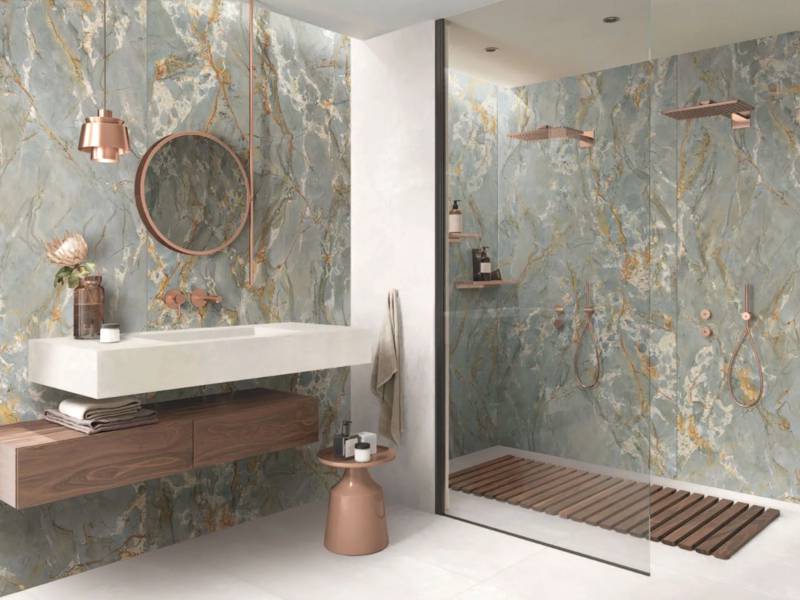
Applications in Architecture and Design
The applications of porcelain stoneware are practically limitless in architecture and design. It can be used for internal and external flooring, wall coverings, worktops, and even for decorative elements such as stairs or fireplaces. Its versatility allows porcelain stoneware to be used in very different contexts, from private homes to commercial and public spaces.
In residential settings, porcelain stoneware is often chosen for floors in living rooms, kitchens, and bathrooms. Its ability to resist moisture and stains makes it ideal for these areas. Furthermore, the various finishes available allow you to create warm and welcoming atmospheres or modern and minimalist environments.
In commercial spaces, porcelain stoneware is particularly appreciated for its robustness and ease of maintenance. It can be used in shops, restaurants, offices, and even healthcare facilities. Here, the possibility of having hygienic and resistant surfaces is crucial. Furthermore, the variety of designs allows the material to be adapted to any branding concept or corporate image.

Maintenance and Cleaning of Porcelain Stoneware
The maintenance of porcelain stoneware is one of the most appreciated aspects by those who use it. Since the material is highly resistant and non-porous, it does not require special treatments. However, there are some simple practices that you can follow to ensure that the surfaces remain in excellent condition over time.
- It is advisable to carry out regular cleaning to remove dust and dirt. You can use a broom or a vacuum cleaner to remove surface debris, followed by washing with water and neutral detergents. Avoid aggressive chemicals, as they could damage the surface.
- For more stubborn stains, you can use a non-abrasive sponge with a mild detergent. It is important to act promptly, as stains can penetrate the material if left for a long time.
- In the event of scratches, porcelain stoneware has high resistance, but if you notice signs of wear, there are specific products for restoring the surface.
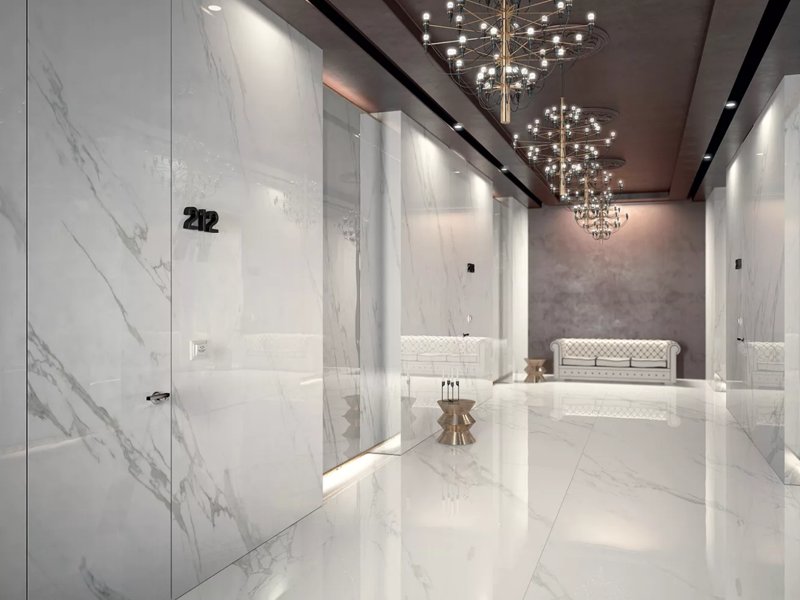
The Future of Porcelain Stoneware: Innovations and Trends
The future of porcelain stoneware is promising, thanks to continuous innovation and new design trends. Today, there is a growing demand for sustainable materials, and many companies are investing in environmentally friendly production technologies. This includes the use of recycled raw materials and the reduction of energy consumption during the production process.
In addition, technological innovation has led to significant developments in the design and customization of porcelain stoneware. Digital printing techniques make it possible to create tiles with extraordinary details, faithfully replicating the textures and colors of natural materials. This offers unprecedented opportunities for architects and designers in creating unique and personalized spaces.
Finally, future trends include the adoption of increasingly large formats and minimalist designs. Porcelain stoneware slabs can be used for continuous coverings, creating an effect of visual continuity in indoor and outdoor environments. This not only improves aesthetics but also reduces the need for grout lines, further facilitating cleaning and maintenance.
In conclusion, porcelain stoneware represents an excellent option for those looking for a durable, versatile, and aesthetically pleasing material. Its continuous evolution makes it suitable for meeting the needs of modern and sustainable design.
If you are considering renovating your spaces with porcelain stoneware, explore the various options available and choose the design that best suits your needs.


